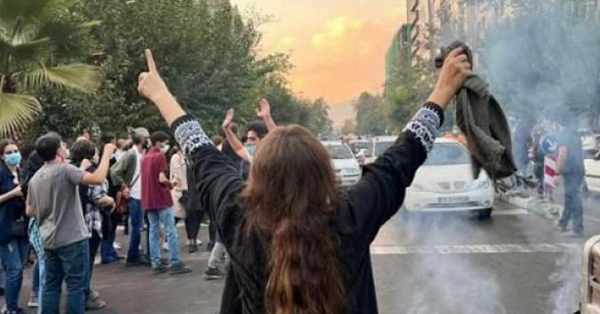As I was leaving after my session at the Kolkata Literary Meet earlier this year, a member of the hospitality team graciously offered to walk me to the car. A young woman with a dupatta casually thrown on one shoulder joined us. From the conversation between the two, I figured that she was my escort’s friend. And a Muslim. After some nudging, my escort introduced her to me. She confidently extended her hand.
‘It was a good session,’ she told me. ‘But I don’t agree with you.’
In response to my surprised look she said, ‘You mentioned that 80 per cent of women wore hijab because of coercion. I think the ratio would be 60-40’.
I explained to her that what I had expressed was an opinion based on my experience and not statistics based on empirical evidence. Not paying heed to my defence, she interrupted me.
‘See, it is not always coercion, sometimes it is a habit because you have been wearing it from your childhood and everyone in your family and neighbourhood wears it. Then you think this is normal behaviour. In such cases, not wearing a hijab is odd. Everyone looks at you and comment on you…,’ she continued in this vein until we reached the car.
My escort requested me if I could drop her at a particular point on my way to the hotel because it would be easier for her to get home from there.
She looked at him sharply and said something in rapid Bangla. From her tone, I could make out that she was offended by his protective zeal.
Then in English she said firmly, ‘I came on my own, no? I will go on my own.’
Looking at my escort’s sheepish expression, I offered her a ride. ‘It’s getting dark,’ I said. ‘I will be happy to drop you. It will also give me a chance to chat with you.’
But she was not persuaded. Tugging at her friend’s elbow, she smiled at him sweetly. This was now between the two of them. As I got into my car, I saw them talking, even as she artfully turned her dupatta into a hijab.
On my drive back, words like habit, conditioning, upbringing, neighbourhood, experience, tradition, honour kept playing in my mind. I somehow could not find a way of delinking these from coercion and linking them with choice or free-will. Perhaps, it was because of my limited understanding of human nature. Then something strange happened. A memory from 2010 flashed through my mind.
I was sitting opposite Kashmiri Separatist leader, the late Syed Ali Shah Geelani in his sitting room for an interview. I asked him about the failure of talks with the government of India, ways of maintaining peace and so on. Just when I felt that he had warmed up to the conversation, I asked him why he shouldn’t be held responsible for the death of 100 odd young people killed in police firing that summer because they came out on the streets to pelt stones at weapon-carrying security forces, heeding his calls.
He gave me a strange look and asked, ‘You are a Muslim woman, aren’t you?’
If it wasn’t him and if I wasn’t slightly overawed by his personality I would have said, none of your business. But I politely replied in the affirmative.
‘Why have you not covered your head then?’ his voice was no longer mild.
I was shocked, embarrassed, uncomfortable all at once. I could feel the hotness on my face and everyone’s eyes on me—my colleague, my photographer, members of Geelani’s staff and a few hangers-on. Like all professionals, I am conscious of clothes and dress according to the occasion, which in most cases, given the nature of my work is conservative. Even that day, I had draped by dupatta around my shoulders in a shawl like fashion. Because I did not want to draw attention to my body.
But Geelani drew everyone’s attention to my fully covered body. Since at that time I did not have the ability to comprehend that wielding control over women’s bodies is means of exercising political control over people, I mumbled meekly, ‘I never cover my head,’ trying to get the interview back on track.
‘Why?’ he thundered. ‘If you can’t follow the tenets of Islam, how can you call yourself a Muslim.’ With this he rose and stormed out of the room declaring that as a devout Muslim he could not sit with an unveiled woman. The fact that he sat with an unveiled woman before the unpleasant question popped up was immaterial.
Since then, I have replayed this conversation several times in my mind, always from the perspective of Kashmiri politics. But it was only in Calcutta that I got the clarity about the politics of hijab. Today, the discussion on hijab swerves between two extremes– coercion and choice. However, there is a whole world between these two, in which realities like habit, mental conditioning, fear, misinterpretation, bullying, identity politics and political control reside.
The truth is hijab has never been about modesty. It has always been about controlling a group of people through their women, using modesty as a ruse. Men are told that their honour, even manhood, resides in the bodies of the women they supposedly command. And then the threat of violation of these bodies is held as a Damocles’ sword to keep the men obedient and subservient.
The truth is hijab has never been about modesty. It has always been about controlling a group of people through their women, using modesty as a ruse. Men are told that their honour, even manhood, resides in the bodies of the women they supposedly command. And then the threat of violation of these bodies is held as a Damocles’ sword to keep the men obedient and subservient. For greater clarity, here’s the context of the third Quranic verse on hijab, recounted by Prophet Mohammed’s youngest and the most well-regarded wife, Aisha. In Hadith 148 recorded by Imam Bukhari, she said:
‘The wives of the Prophet used to go to Al-Manasi, a vast open place (near Baqi at Medina) to answer the call of nature at night. Umar[1] used to say to the Prophet “Let your wives be veiled,” but Allah’s Apostle did not do so. One night, Sauda bint Zam’a the wife of the Prophet went out at “Isha”[2] time and she was a tall lady. Umar addressed her and said, “I have recognized you, O Sauda.” He said so, as he desired eagerly that the verses of Al-Hijab (the observing of veils by the Muslim women) may be revealed. So Allah revealed the verses of “Al-Hijab” (a complete body cover excluding the eyes).’[3]
Apparently, the reason Umar was keen that Prophet Mohammed’s wives should be fully covered was because a group of bandits used to stake out the area where women went to relieve themselves at night. Umar’s argument was that if the women were known as Muslims then the bandits, for fear of retribution, wouldn’t molest them. Of course, it would have been more logical to task the Muslim soldiers to take on the bandits instead of covering-up the women. But then that would not have placed restrictions on independent, confident and assertive women.
Anyway, the verse that is frequently used to urge invisibilisation of women reads:
‘O Prophet, tell your wives and your daughters and the women of the believers to bring down over themselves (part) of their outer garments. That is more suitable that they will be known and not be abused. And ever is Allah Forgiving and Merciful.’[4]
The nuances of what this ‘bringing down of their outer garments’ would entail, from covering of toenails to facial masks was explained over the centuries by male interpreters of the Quran. And that is why hijab remains one of the most contested subjects among Muslims, where a large number of believing Muslim women refusing to wear one. For most men, there isn’t enough that women are doing to cover themselves up, and for most women, they can’t do enough to keep preying men at bay.
Despite the love of Allah, fear of Allah, allurement of paradise, terror of hell, moral police, unyielding patriarchs at home and dread of potential rapists, women of Iran are still throwing away their scarves. Why? Because they are waging a strategic war to wrest the spirit of Islam from the male of the species.
Unfortunately, in India, Muslim women are still allowing themselves to be used as pawns for small tactical gains by men. Unless they understand this politics of hijab, they will continue to conflate conditioning with choice.
(The writer is editor, FORCE magazine. Her recent book Born A Muslim: Some Truths About Islam in India has won two awards)
[1] Umar succeeded Abu Bakr as Caliph
[2] Isha is the last of the five mandatory namaz. It is read after dinner
[3] https://quranx.com/Hadith/Bukhari/USC-MSA/Volume-1/Book-4/Hadith-148/
[4] Surah Al Ahzab. https://quran.com/33 Verse 33:59





